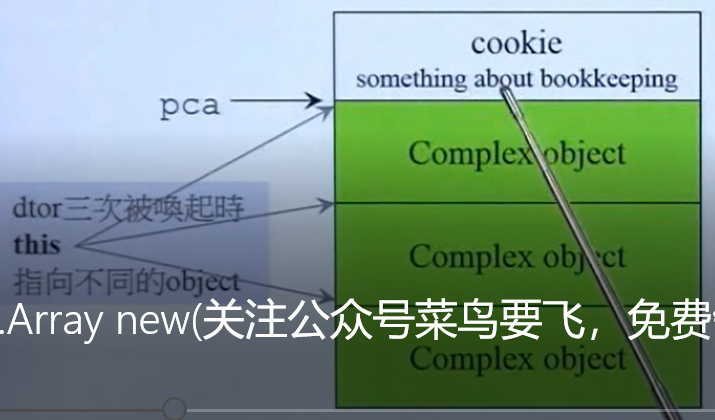使用构造函数,构造函数连续构造:

#include <iostream>
#include <complex>
#include "class_a.h"
using namespace std;
/* run this program using the console pauser or add your own getch, system("pause") or input loop */
#define size 3
int main(int argc, char** argv) {
//complex* pa = new complex[3];
//内存泄漏就是只是释放了一块儿内存地址,当然删除一次和删除三次其实效果是一样的。
//使用array new 就要使用array delete
A* buf = new A[size];//调用默认构造函数 构造是由上向下的
A* tmp = buf;
cout<<"buf="<<buf<<" tmp="<<tmp<<endl;//证明buf和temp的内存地址是完全一样的
for(int i=0;i<size;i++)
{
new(tmp++)A(i);//ctor3次调用构造函数 (会直接将上面默认构造的元素替代)
}
cout<<"buf="<<buf<<" tmp="<<tmp<<endl;
delete[] buf;//析构是由下向上的
return 0;
}
上述代码说明,array new和array delete,是一对必须一起使用,否则会造成内存泄露。上述代码是整型变量,不存在析构函数,也就不存在内存泄漏,所以即使不使用析构函数也影响不大。